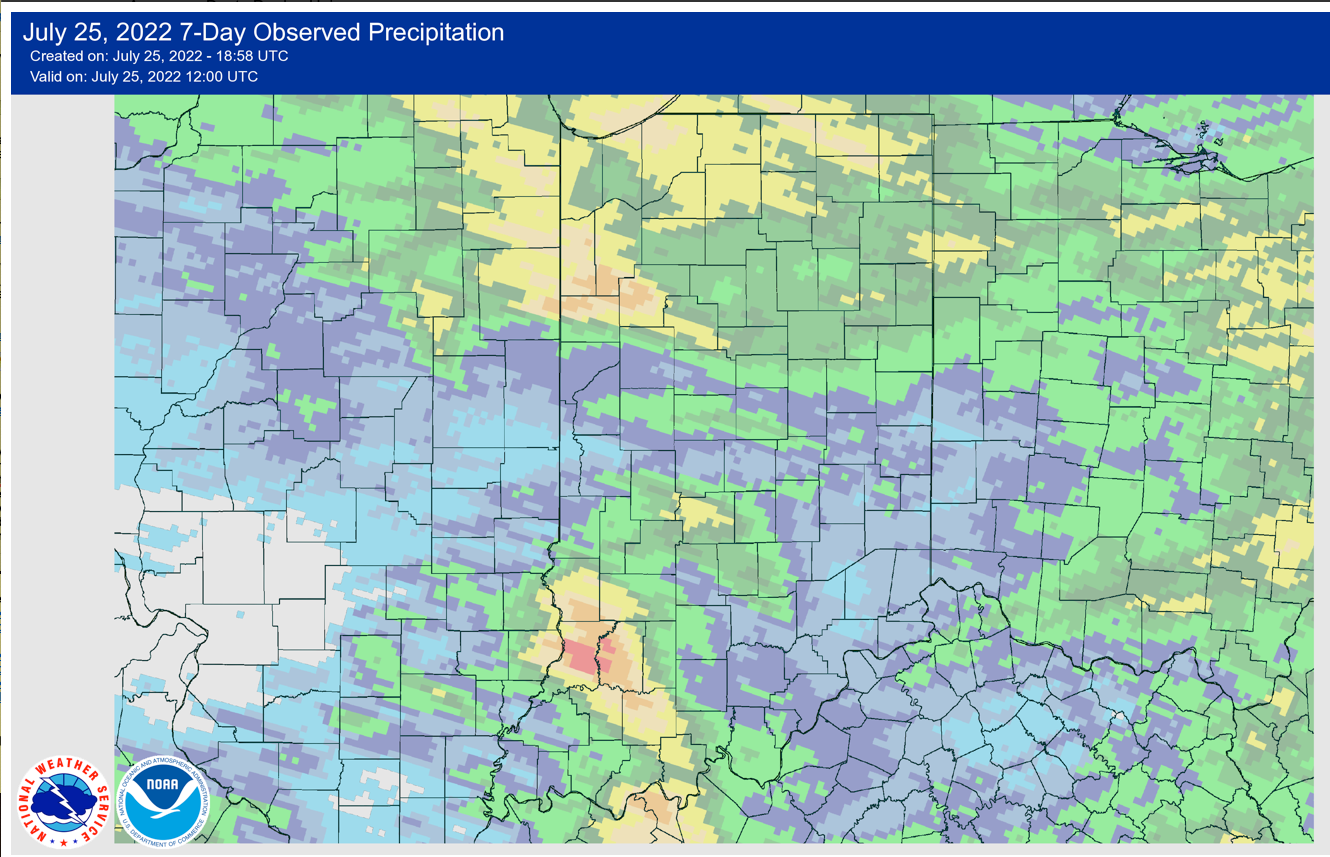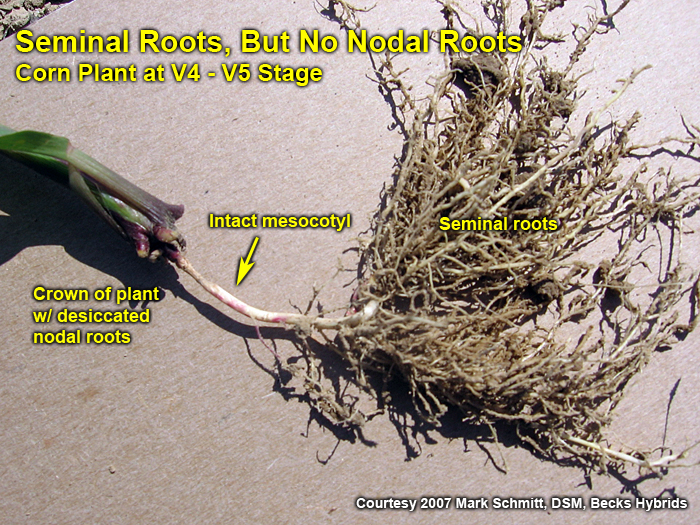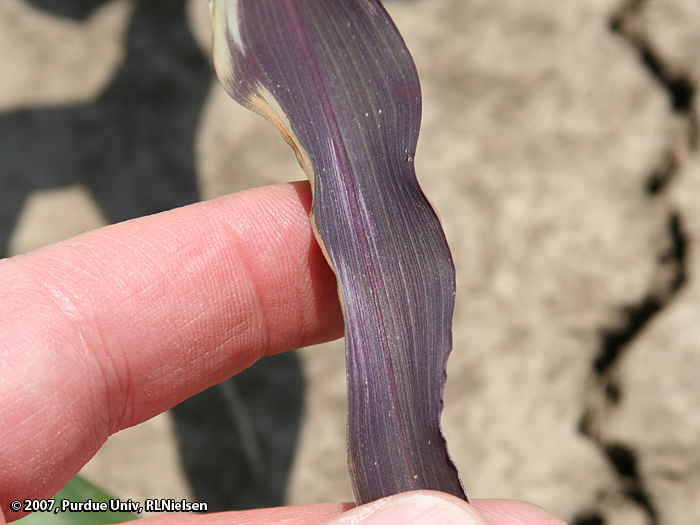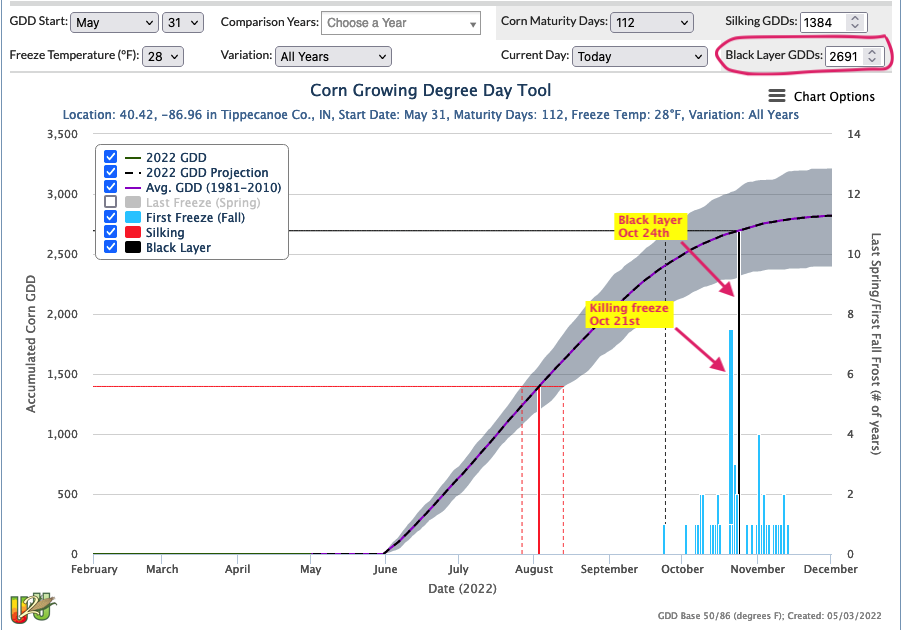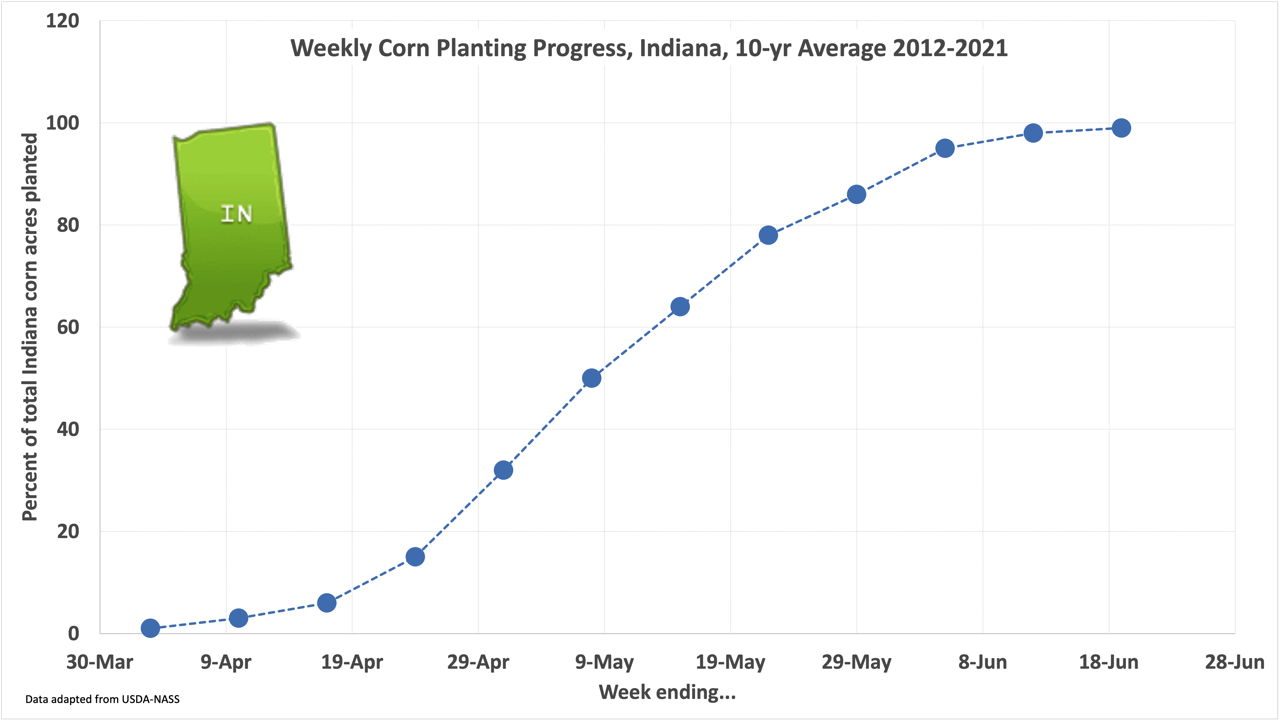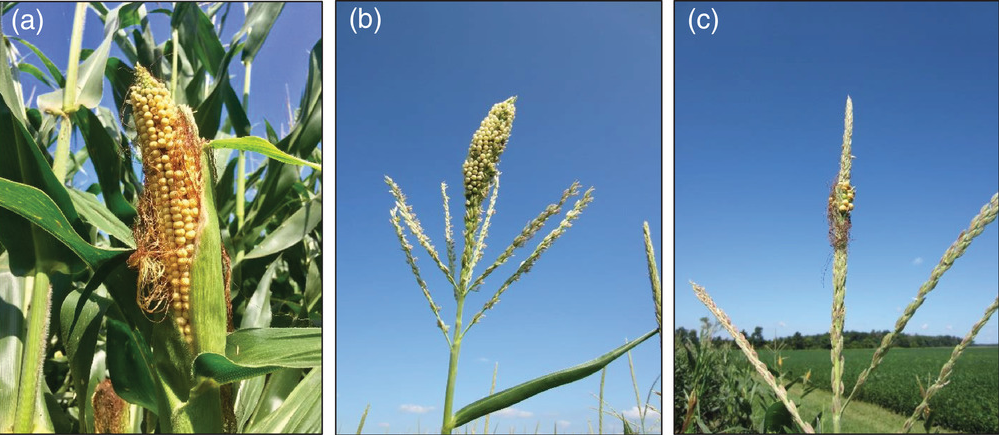
Sulfur Deficiency
Sulfur (S) deficiency has become more common in
Indiana crops because S emissions from coal-fired power
plants have decreased over the past few decades
(Camberato et al., 2022). Consequently, atmospheric S
deposition to soils has also decreased.
Sulfur deficient corn plants exhibit a general yellow-
green color from top to bottom of the plant, often also
with visible leaf striping (Fig. 1). Other nutrient deficiencies
can cause striping and can sometimes be confused with S



